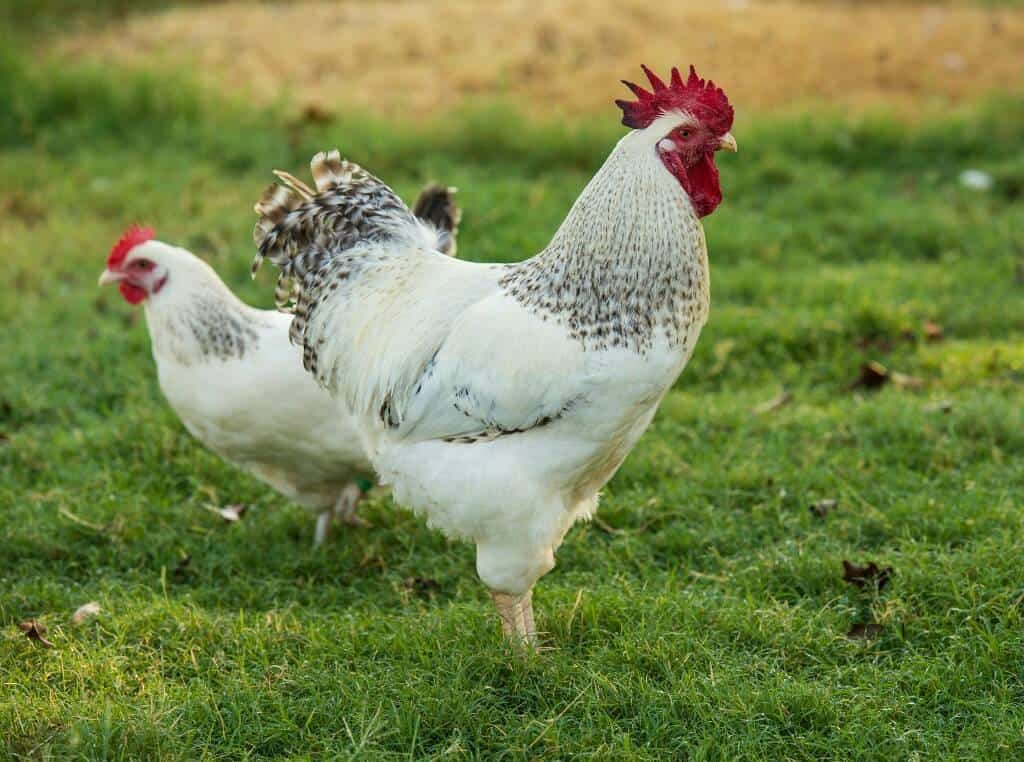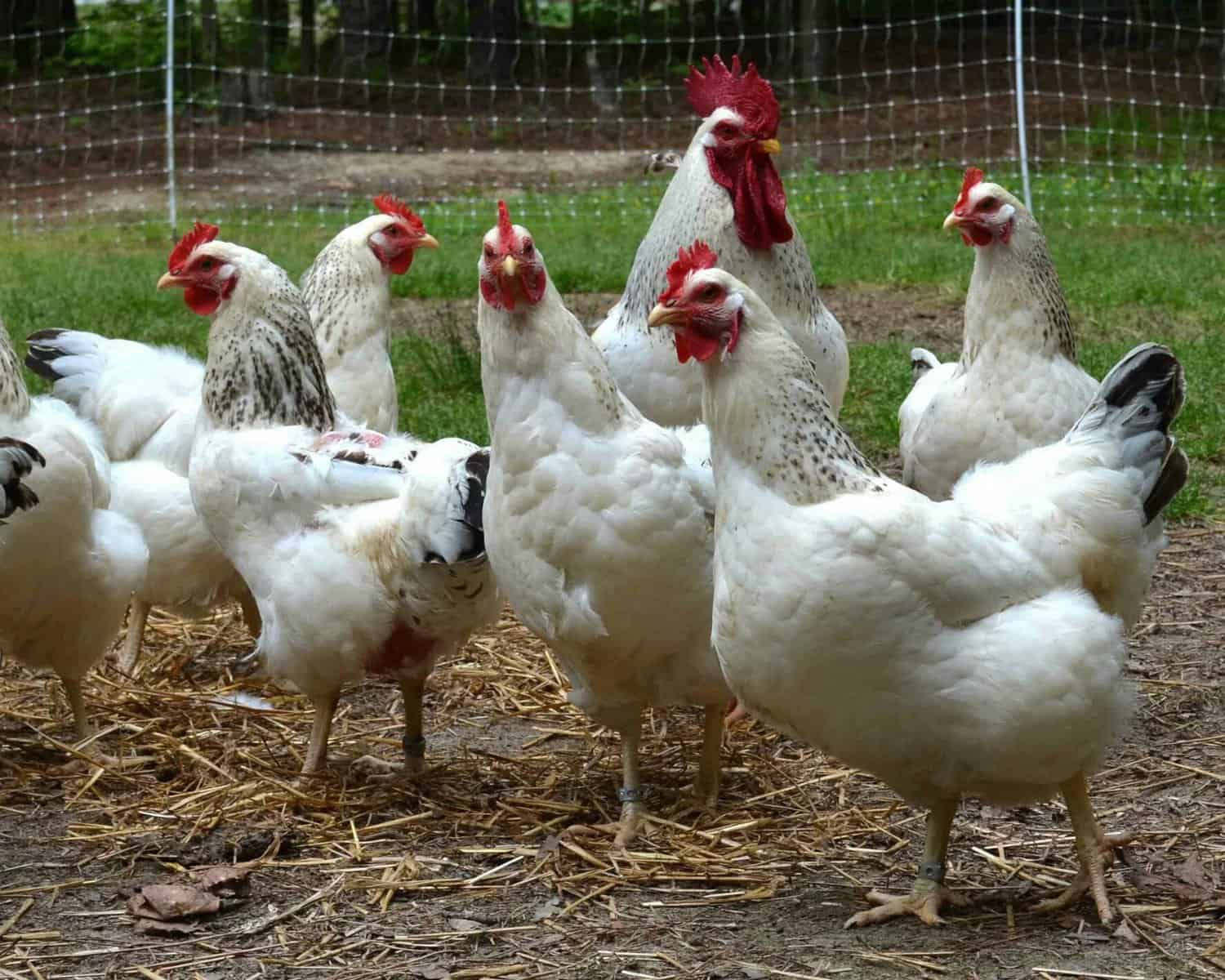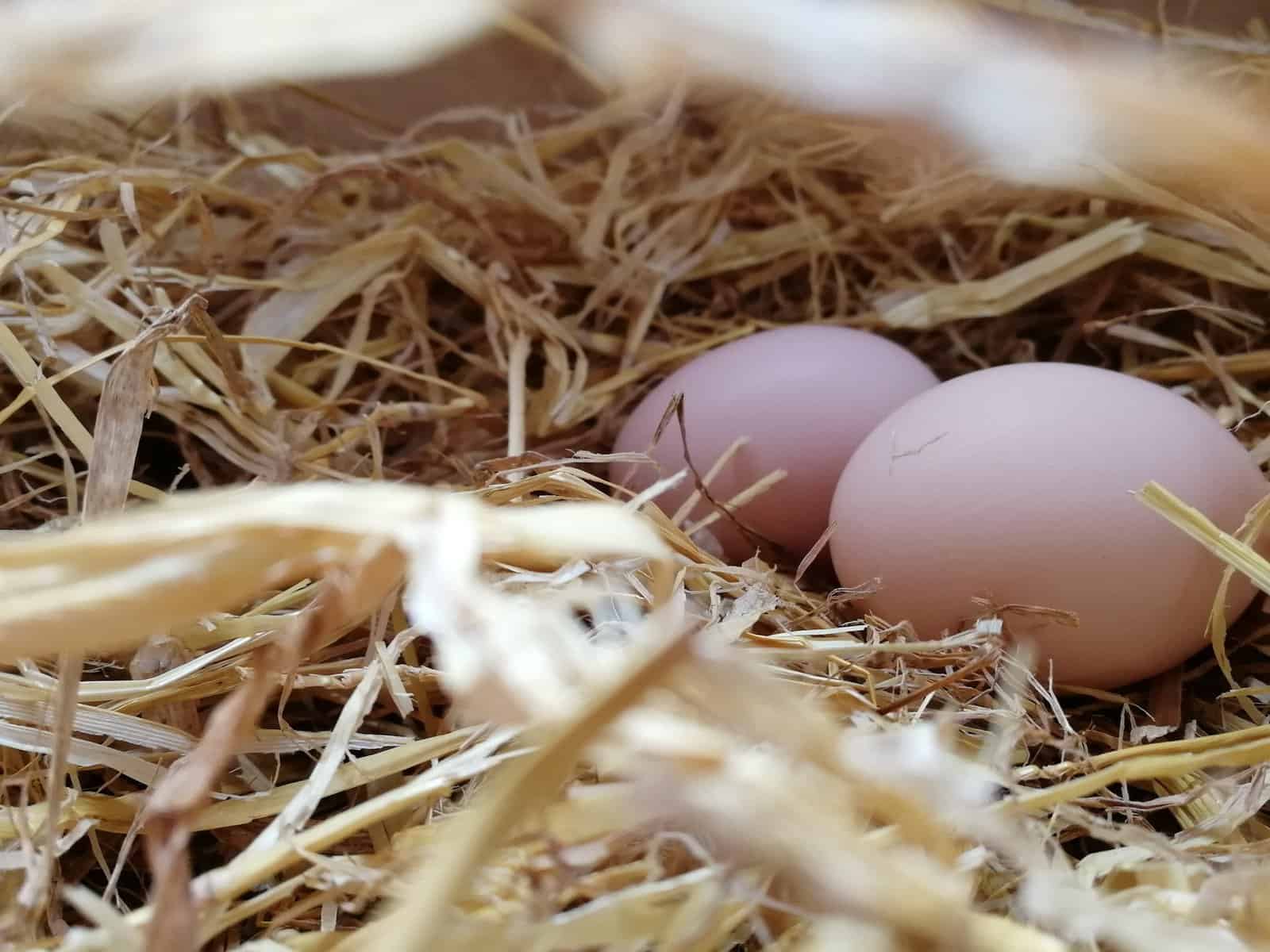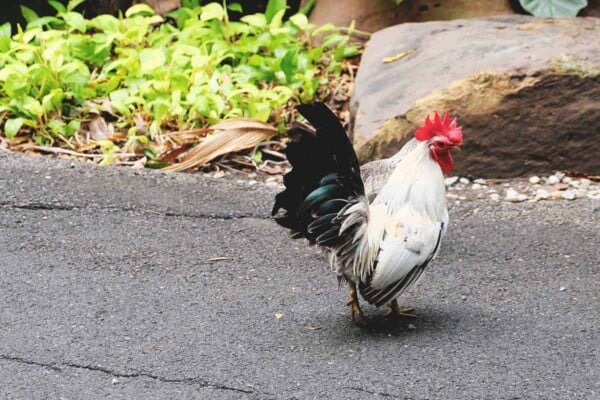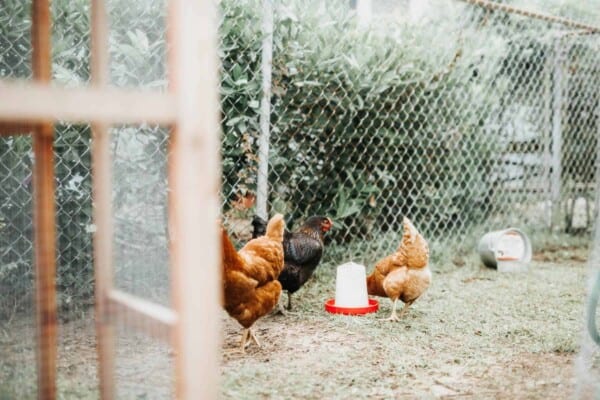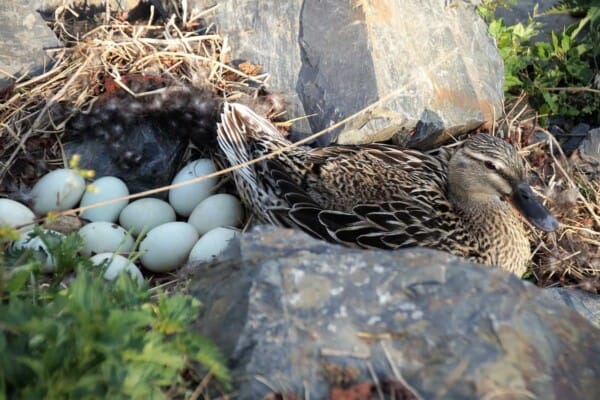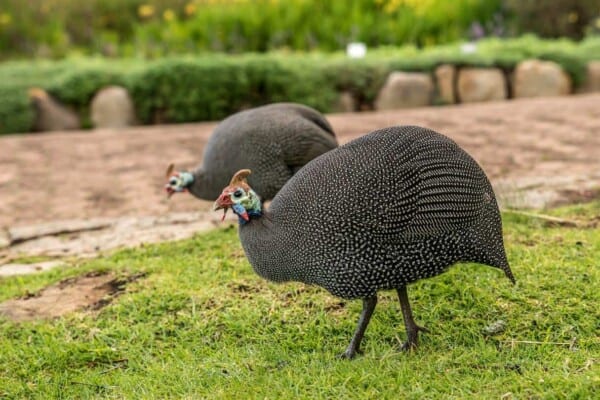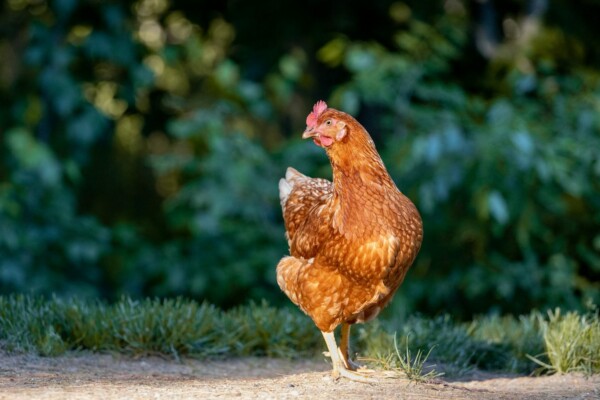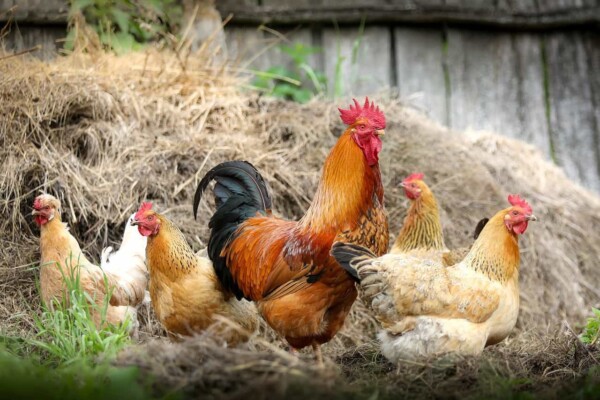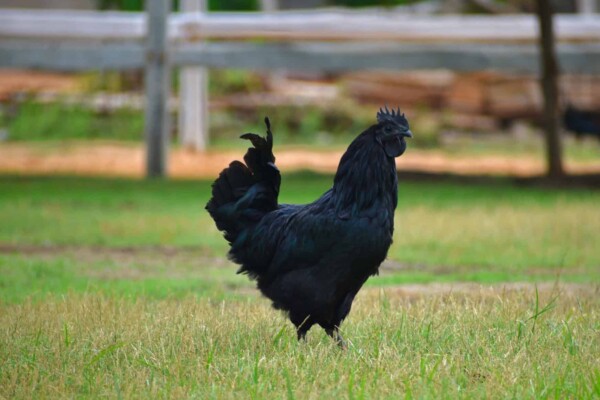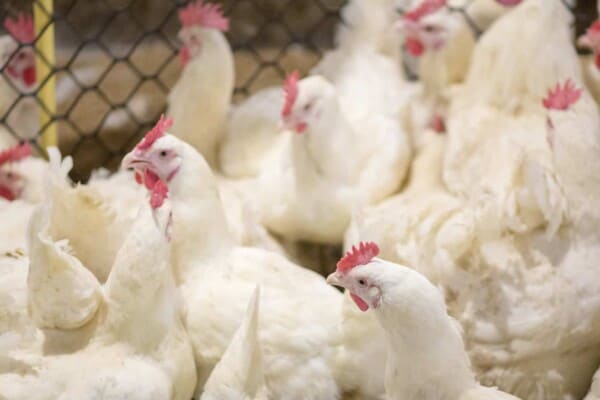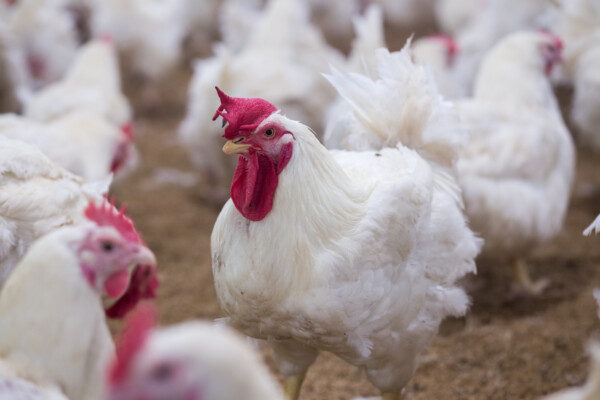Despite being one of the newer chicken breeds to be commercialized, the Delaware chicken breed had quickly become a “superstar” for most hatcheries back in the 40s.
That is because there is little to dislike about the Delaware chicken, especially when you consider the high-quality meat and eggs that it produces.
But, despite the fact that Its meat is incredibly tasty and its eggs are very nutritious, these chickens almost went extinct a few years back.
Back in the 1940s, a team of breeders came together with one singular purpose in mind: Create the best chicken breed around.
Their quest was mighty and they didn’t want to waste any time, so they rushed through the project hoping to turn steel into gold.
But sadly, because of some unfortunate events that soon followed, the Delaware chicken breed feel into obscurity, never to be seen again.
Or, was it? Thanks to a few dedicated individuals that helped keep the breed alive for a few more decades, the Delaware chicken has now made a complete comeback, as its numbers are steadily rising as we speak.
And that’s just scratching the tip of the iceberg when it comes to this breed. So, saddle up and get ready because we’re about to walk you through everything there is to know about the Delaware chicken, starting off with:
The History and Origins of the Delaware Chicken
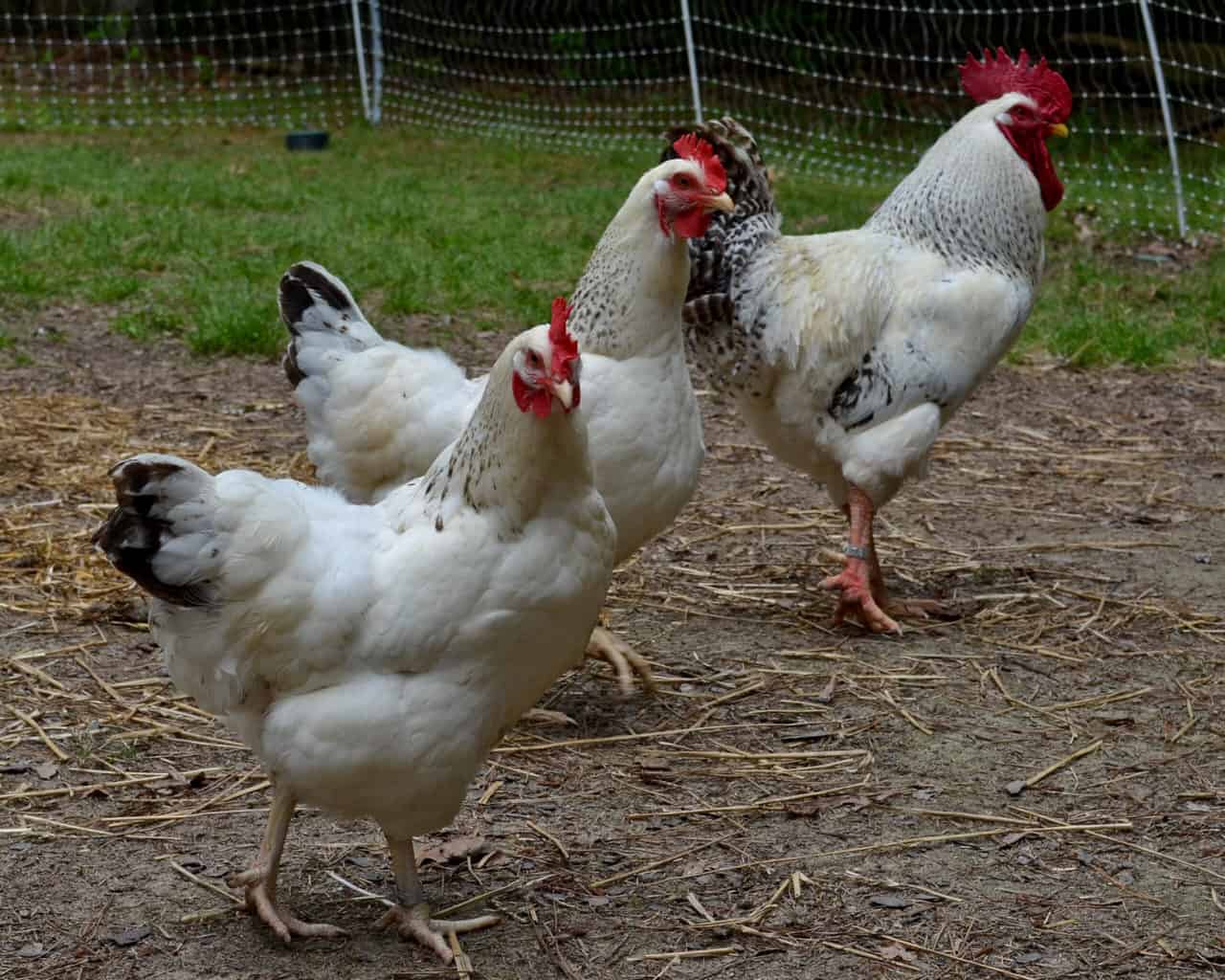
Interestingly enough, the Delaware chicken breed may be one of the most successful accidents we’ve ever seen.
That’s because, while a lot of thought went into the developing of most other breeds, the creation of the Delaware chicken all stems from a single Rhode Island Red.
Back then, the Rhode Island Red breed was known as the top-of-the-line choice for any sort of breeding, as they had the best eggs and the best meat in the industry.
So, in the 1940s, a man by the name of George Ellis looked at these birds and decided that it was about time that he perfected them altogether.
His main objective was to create a new breed that would be able to maintain that same level of egg production, while also increasing its meat production exponentially.
This was no easy feat as it would take many years of hard work to actually achieve his goals, but even so he didn’t let any of that get to him.
On top of that, he also added ‘easy plucking’ to the list of advantages that he wanted the new breed to have, as he wanted to support fast feathering and a rapid growth rate in order to make this the perfect chicken breed.
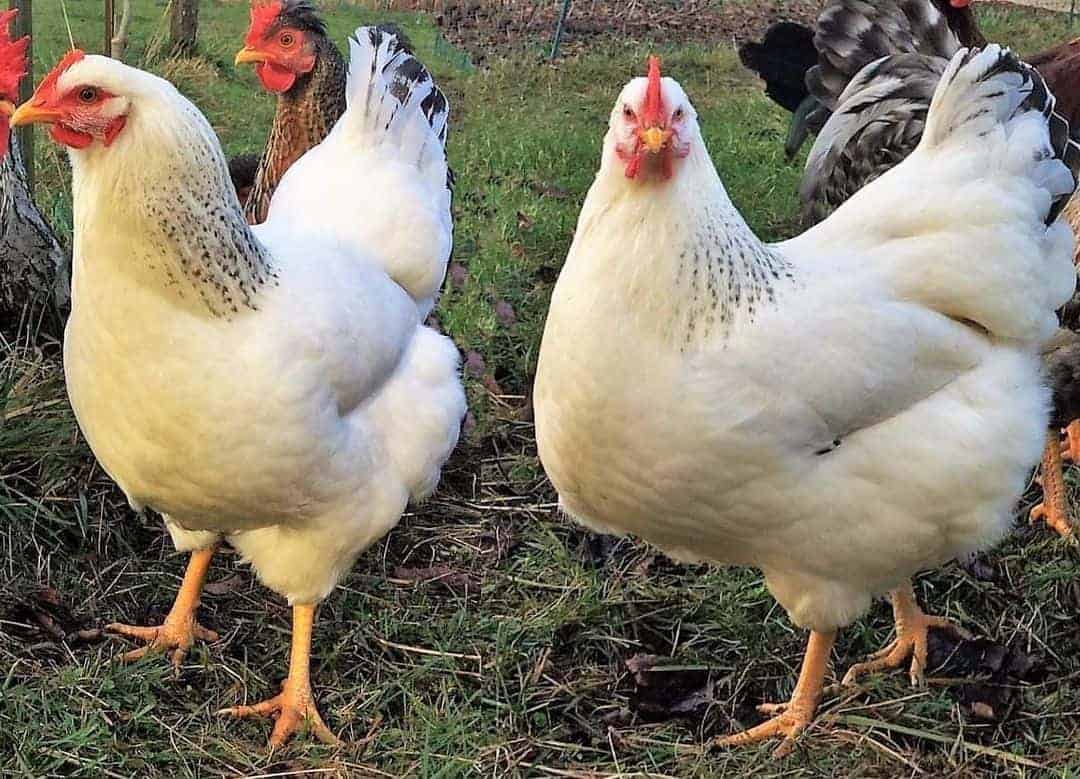
He worked tirelessly, until he eventually stumbled upon a unique formula which led to the creation of the Indian Rivers.
After a while though he decided to change the name to the Ohio Beauties, only to then finally set his sights on a new name, aka the Delaware chickens.
This quickly became one of the most popular birds in the Mid-East, pretty much taking over the market overnight. This popularity lasted for around 20 years or so, only for it to be overtaken by the Cornish Rock cross.
After their numbers started to dwindle down, they officially stopped focusing on the breed, which led to it almost going extinct.
The only reason as to why the breed is still available to this day is the fact that a few dedicated souls kept breeding them over the years.
Sadly though, even with their continuous help, in 2009 the American Livestock Breed Conservancy listed them as critical status, meaning that it wouldn’t be long until they’d be completely gone for good.
Luckily, as mentioned previously, thanks to the conservation efforts of a few dedicated individuals, the Delawares have been brought back from the brink of extinction.
While they are still on the Livestock Conservancy watch list, you can still get your hands on a few Delaware chickens if you want to.
If you are interested in becoming a proud owner of a Delaware chicken then this is what you need to keep in mind:
Delaware Chicken Breed Characteristics
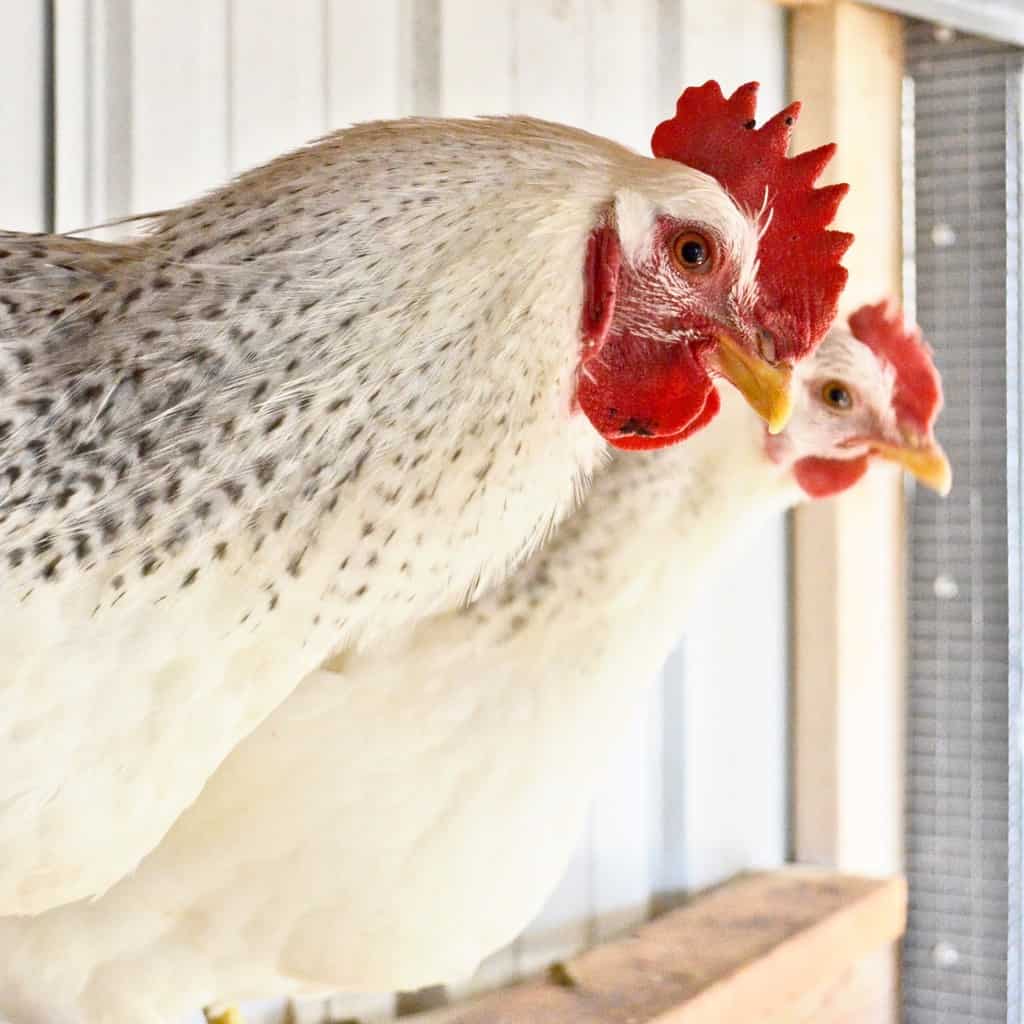
There aren’t too many different color varieties for you to pick from as far as the Delaware chicken breed is concerned.
Luckily though, the standard bright white variety with black barring on the hackles and tail feathers is quite a looker, so you won’t be disappointed with that.
But regardless, while appearance wise, they’re quite cute little fluffballs, let’s talk about the more interesting aspects that you should concern yourself with, such as:
Meat Production
As mentioned previously, very few Delaware chickens made it over the years, and as such a lot of the different varieties that existed in the 50s disappeared.
As such, most of the Delaware chicken varieties you’ll find today are recreations of the original experiments that were conducted back at the Indian Rivers hatchery.
Even so, George Ellis, the original creator of the Delaware chickens, had put a lot of emphasis on the meat production of the breed.
That’s why he worked tirelessly to make it so that the Delaware chickens would grow fast and feather quickly.
This made it so that you could take them and put them on pastures at a very young age which resulted in a quick and easy source of meat for the farmers.
On top of that, the white feathers and their light density makes it very easy to clean up the carcass, which makes Delaware chickens quite easy to prepare on your own.
Egg Production
Back in the day, while they could produce eggs consistently, Delaware chickens were anything but popular for their egg production.
Instead, they were more so meat chickens that could also produce a handful of large brown eggs for you to add to the table.
Nowadays though, the number of eggs that they can produce has steadily increased, to the point where instead of having 100-150 eggs per year they can easily produce as many as 250 to 280 eggs.
As such, Delaware chickens are now considered to be quite a proficient dual-purpose breed to invest into.
Ornamental Value
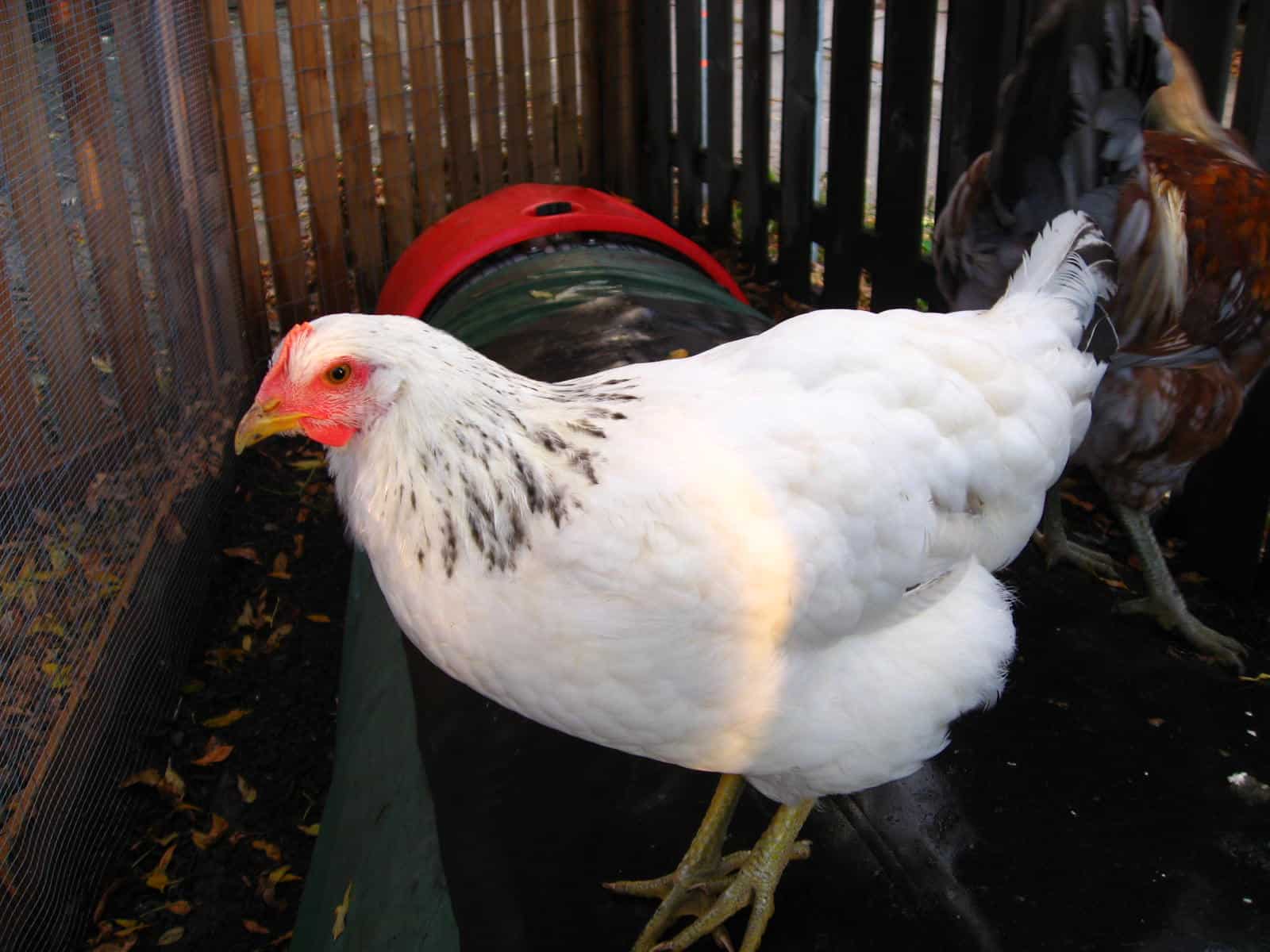
Due to how rare they are, it’s no wonder that the few times that the Delaware breed has made its way to the poultry exhibitions, it has gotten quite far.
As such, in recent years there has been a resurgence when it comes to giving the breed new traits, including an extra emphasis on the show quality feathers.
On top of that, the intricate barring on the hackles and the gorgeous looking black tail feathers always make for quite a treat to behold.
Delaware chickens are also known for their thick feathering, which in turn makes them appear to be way fluffier than the average chicken breed.
Hard-Working Foragers
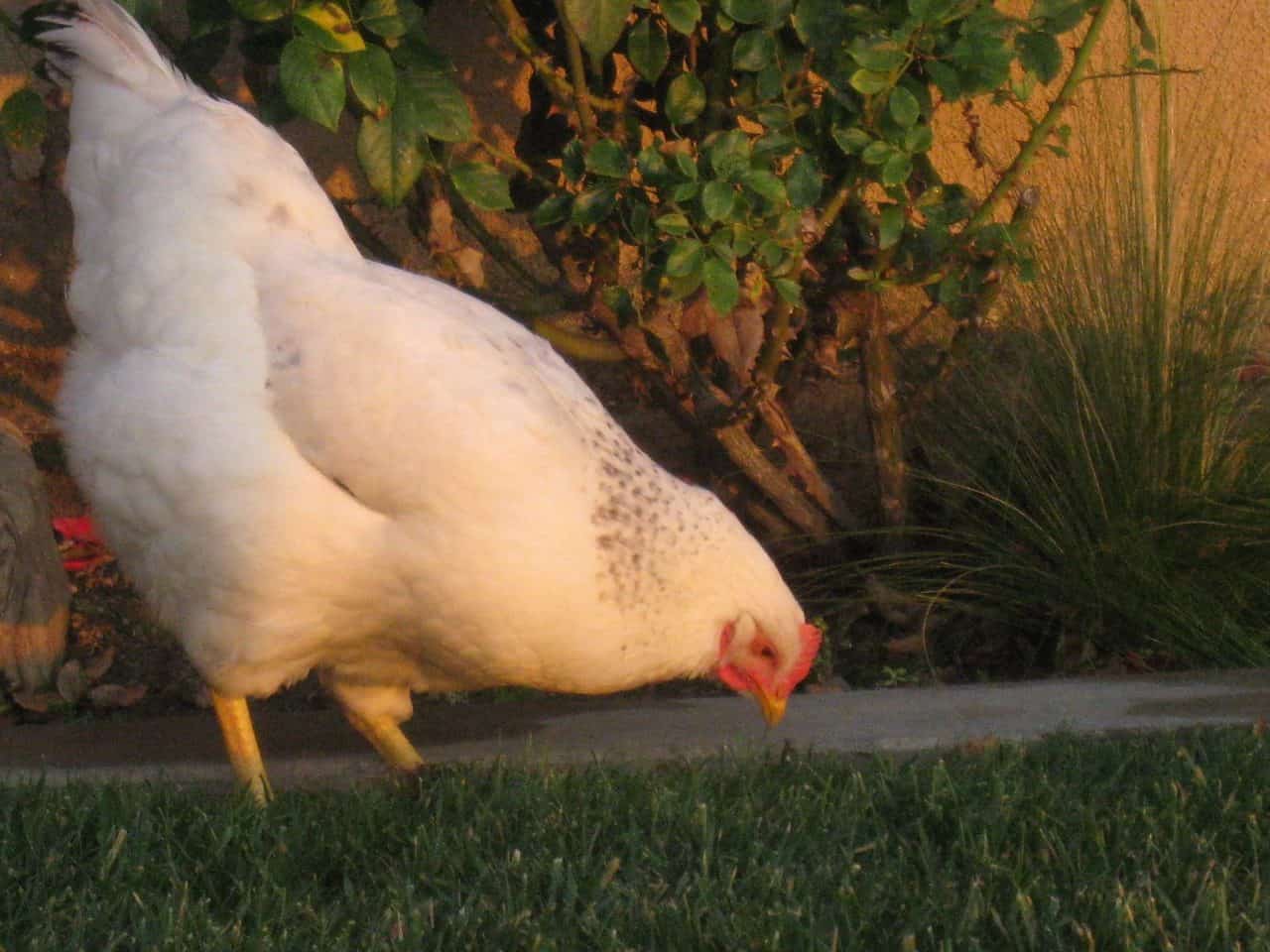
One thing that we can say that the breed has retained all throughout all of these years though is the fact that the chickens themselves continue to be very active and intelligent foragers.
Even though they are white colored birds, which makes them quite visible to predators from a mile away, Delaware chickens absolutely love roaming the pastures all day long.
Delaware chickens are also quite proficient when it comes to checking their six at all times. They are very well aware of their surroundings, and in case they get ambushed, they will fight back.
Due to how good they are when it comes to foraging, some breeders have even started to breed Delaware chickens as a non-hybrid alternative to the Freedom Rangers.
Size
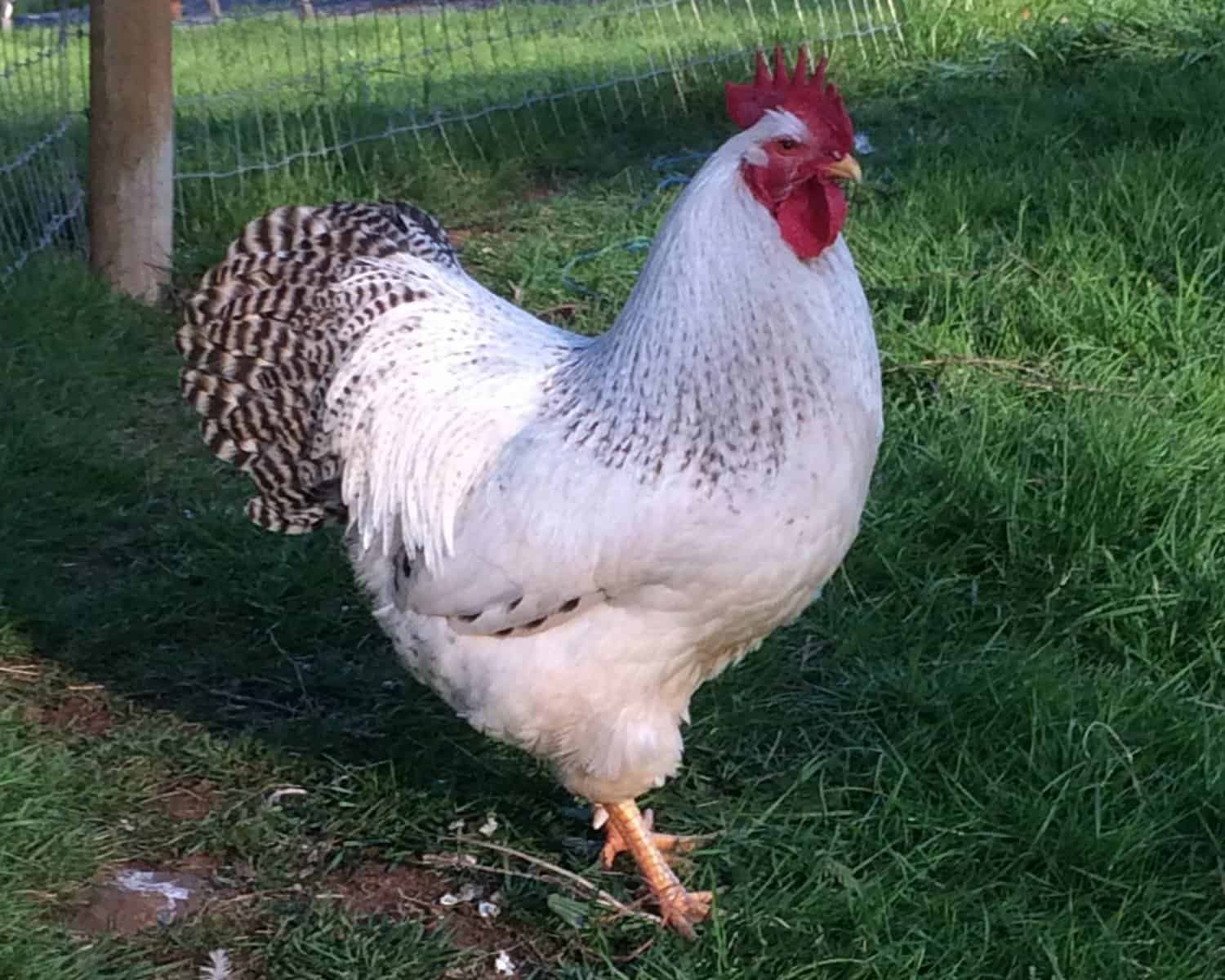
Do keep in mind that while there are official breed standards as far as their general size is concerned, a lot of it varies based on their bloodline.
Regardless, you should be able to start harvesting their meat after around 3-4 months or so, but if you prefer to raise them for their egg production, you’ll get to keep them for a much longer period of time.
Even so, you can expect most pullets to weigh in at around 5.5lbs, while hens on the other end tend to weigh in at around 6.5lbs. Cockerels weigh around 7.5lbs each while cocks tend to weigh around 8.5lbs.
Temperament and Behavior
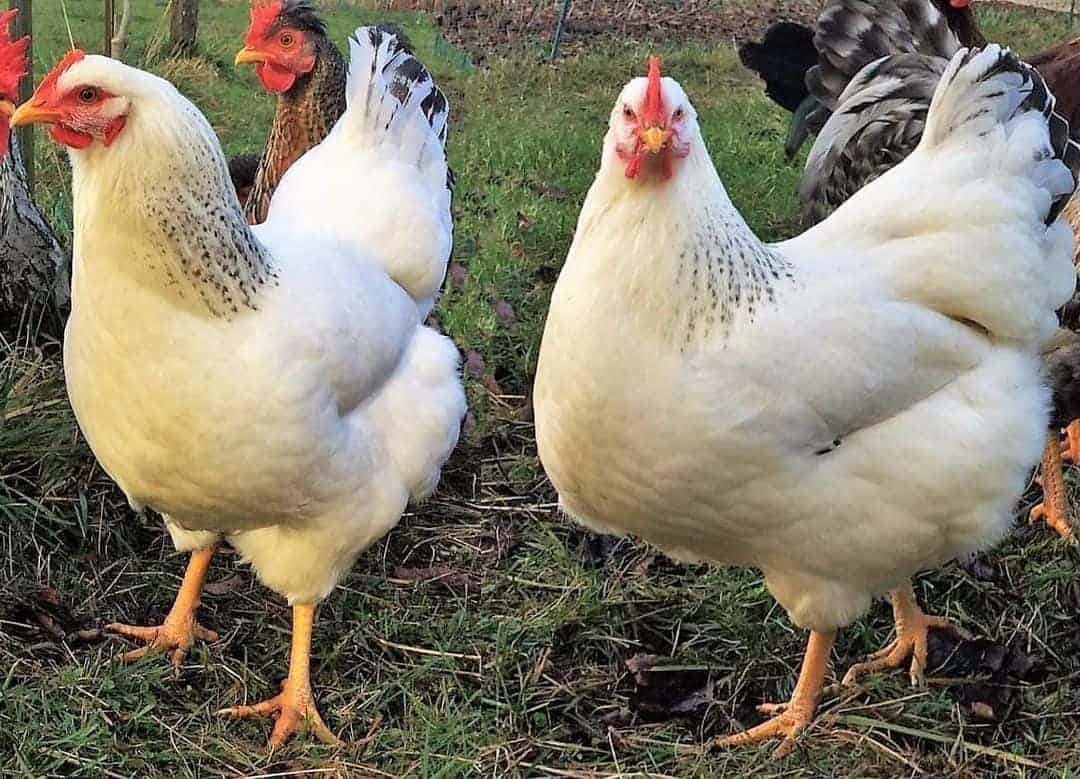
Interestingly enough, Delaware chickens are nowhere near as friendly as you may think. This is because they were originally bred to fight back against predators, so if they get pushed around a lot they will eventually attack.
Even so, most of the time, as long as you treat them nicely, you shouldn’t ever have to worry about your Delaware chicken attacking you for no real reason.
What they may lack in cuddliness though they more than make up for in intelligence. That’s because Delaware chickens are extremely attentive and curious when it comes to their actions.
They are also known for sticking to their own neck of the woods most of the time, foraging on their own as opposed to following the flock around aimlessly.
Do keep in mind however that while they are independent, they are not adversarial. This means that they do like their privacy, but that doesn’t mean that they’ll start pecking their way up the flock hierarchy either.
On top of that, Delaware chickens are so non-confrontational that they even end up roosting last. Experts believe that this is because they want to avoid pecking order issues.
Appearance
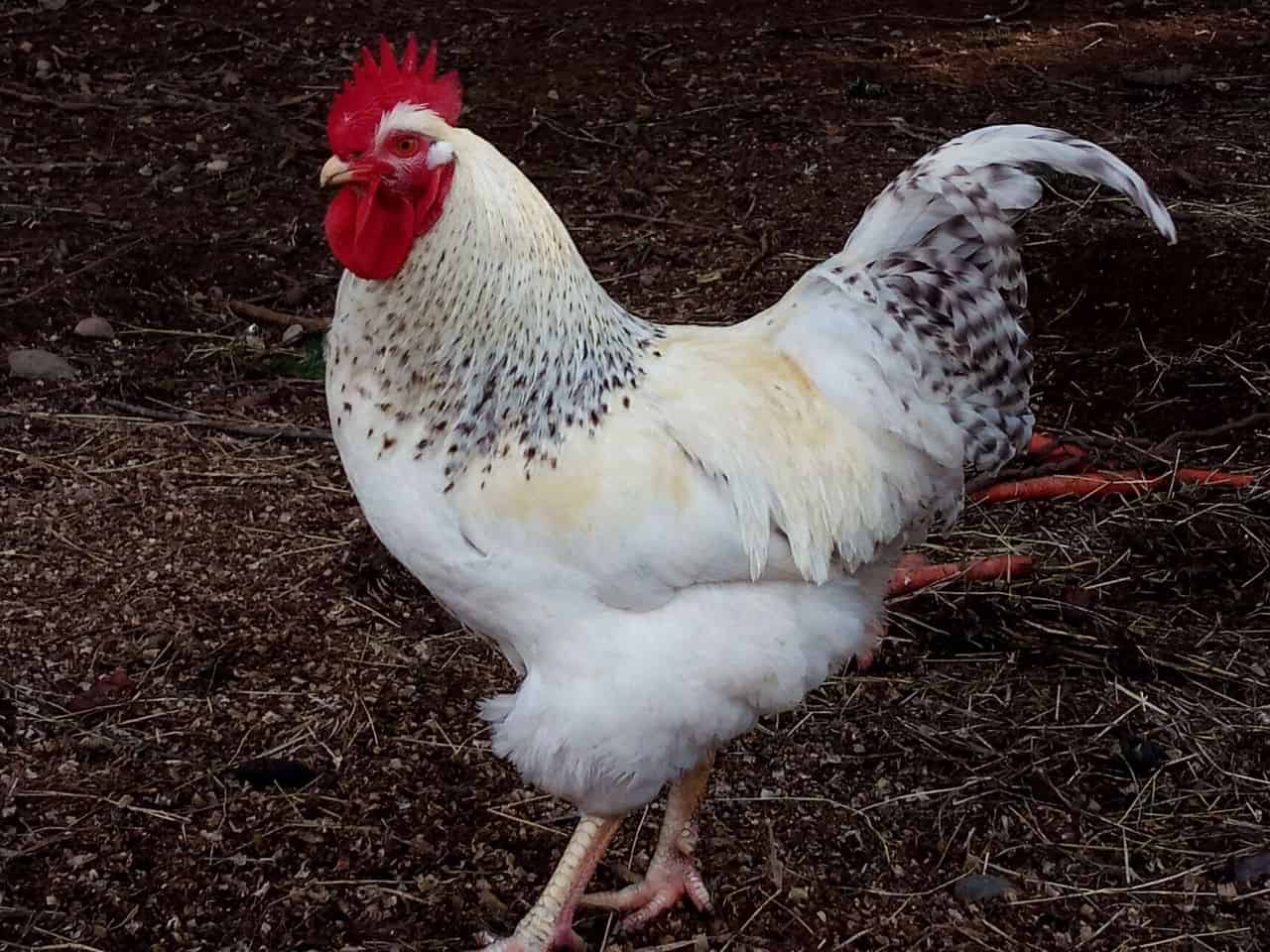
When it comes to its general appearance though, the Delaware chicken is known as a medium-sized, dual-purpose bird with a very broad and deep body.
Most of them grow up to be around 6 to 8lbs each, but at the same time you can invest in a bantam variety which will weigh in at less than 32oz each.
Most of them are also white/silver with black barring on the hackles, wings and tail, and they all have a five-pointed comb with red wattles and ear lobes.
If you do happen to live in a colder area, we recommend that you apply Vaseline to your Delaware chicken’s combs so as to protect them.
As far as the eyes are concerned, they are a bit reddish bay colored, while their beak is known for being dark reddish. Their skin and legs are yellow and for the most part they should all have around four toes per foot.
Health Issues
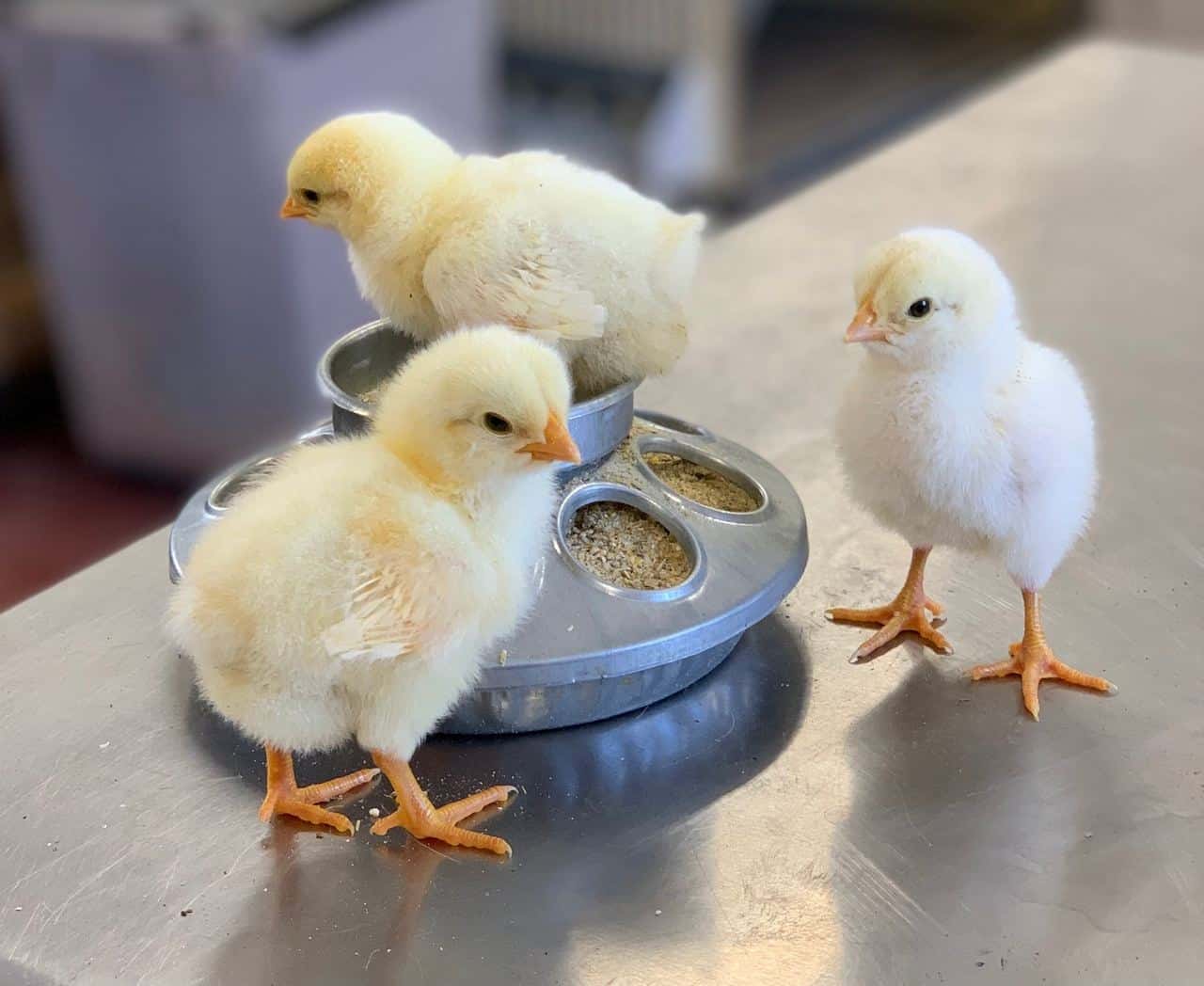
Interestingly enough, the Delaware chicken is pretty much known for being one of the hardiest and healthiest chicken breeds around.
On top of that, Delaware chickens are also known for being fast-maturing and low-maintenance birds that also make for great beginner friendly options.
There are no known circulatory or lung problems that are associated with this breed, but do keep in mind that this just means that there are no genetic dispositions for the breed.
So your specimen may still develop problems so always make sure to check in with a medical professional to make sure that everything’s okay with your bird.
Your Delaware chicken can begin breeding and laying eggs as soon as they turn 16 weeks old, although we’ve also heard a lot of owners state that they can start producing eggs even faster than that.
One problem that you will need to look out for though is the fact that this early maturing does come with a very serious problem.
While your bird will start laying eggs pretty much overnight, after the five-year mark your Delaware chicken’s health will quickly spin out of control.
So, before long they will pass away most likely, even if you give them the best treatment around. In simple terms, these birds are not meant to be kept as pets.
This means that if you are specifically looking for a long-time layer or a pet, you may want to stay far away from the Delaware chicken breed.
Feather Problems
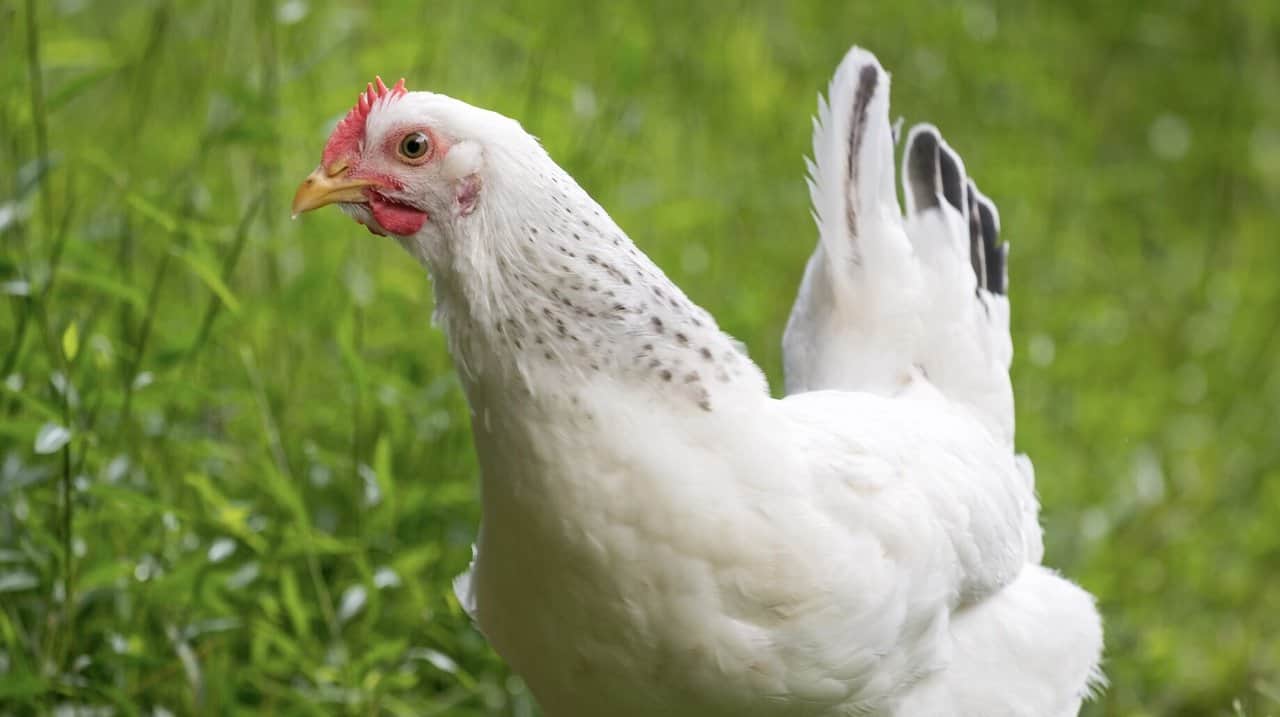
If you do decide to go down the ornamental route, you will also need to invest in an ornamental Delaware.
This is very important as most large hatchery offered Delawares feather quickly, so before long they will start losing their feathers and thus seem a lot less plump and fluffy.
So, if you are primarily looking to buy yourself an ornamental chicken, you will need to constantly be on the lookout to make sure that your chicken does not sustain any feather damage.
On top of all of that, bare-backed and bare-butted Delawares are quite common in mixed flocks, and when coupled with the fact that they are not the most social creatures around, they are quite prone to being bullied by other, bigger members of the flock.
Weather Protection
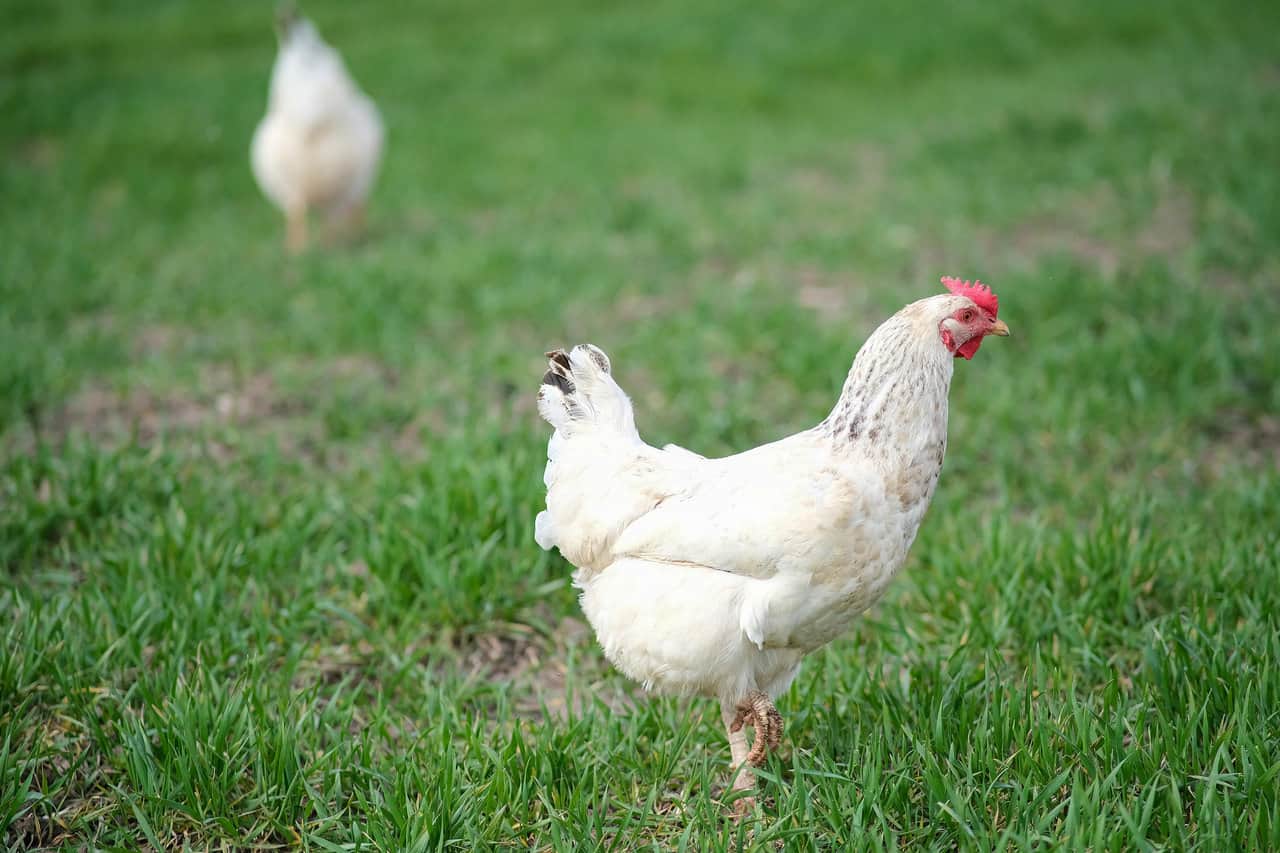
Last but not least, when it comes to their general health, you should also know that Delawares are very tolerant to heat.
That’s mostly due to the fact that their feathers are white and they are a lot less dense than most other breeds.
They will still need shade and cool water to help them regulate their body heat though, so make sure to give them everything they need during peak hours.
An interesting fact about the Delaware chicken breed though is the fact that even though they are quite muscular, they don’t require special care when it comes to maintaining that muscle mass.
At the same time, while they are not cold resistant per se, they do seem to handle themselves in colder climates too, so keep that in mind.
Raising Delaware Chickens: Pros and Cons
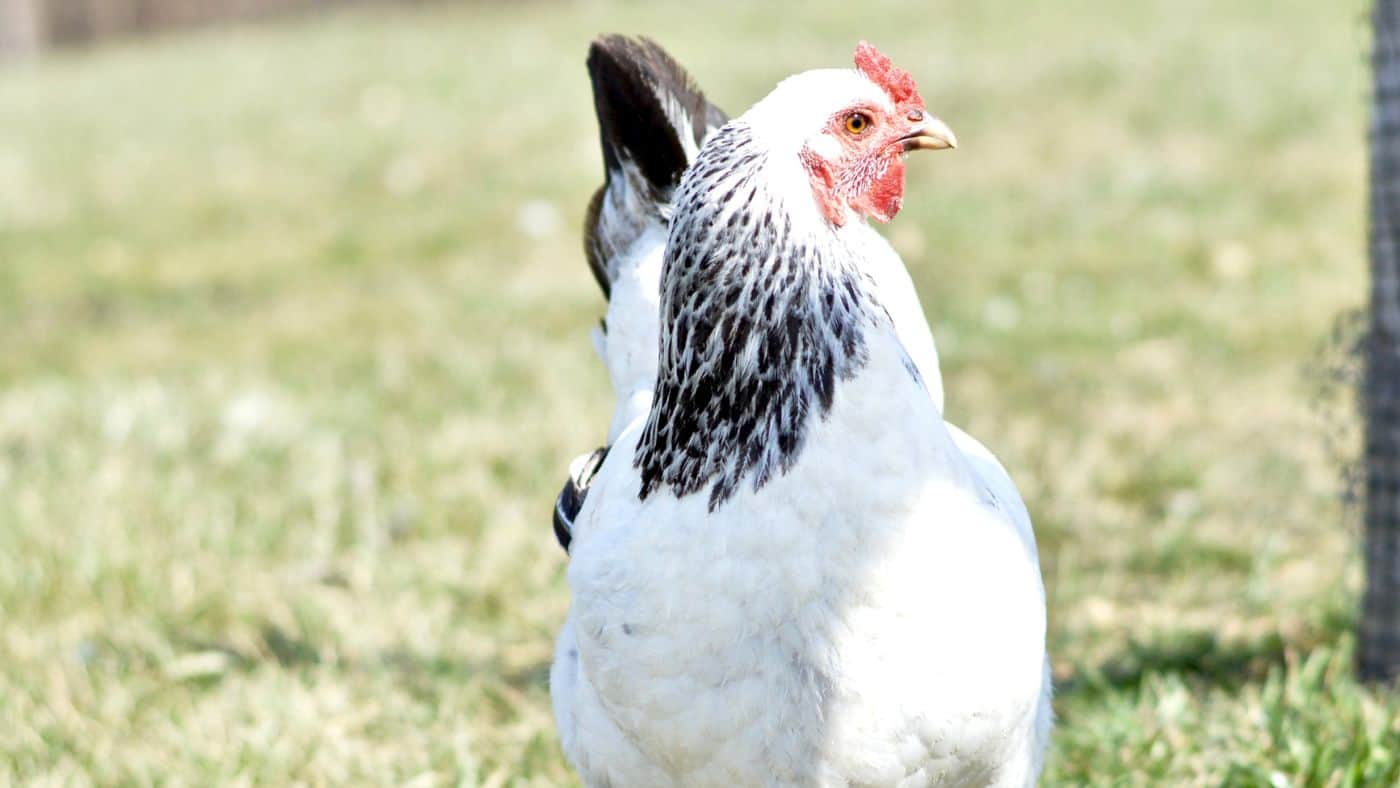
If you’re still looking for reasons as to why you should or shouldn’t get your hands on a Delaware chicken, look no further because these are the top pros and cons that we could think of.
Pros:
- To start this off, Delaware chickens make for excellent foragers
- They are also amazing when it comes to their egg production, with over 250 eggs produced per year
- Their meat may not be the number one out there, but it is still incredibly flavorful and sweet
- They are predator-resistant while also being willing to protect themselves against any dangers
Cons:
- Depending on the breeder you get your bird from, you may get a different quality bird
- They do appear to have light feathering both on their bottoms and on their backs
- While they are great dual-purpose birds, they do not excel in either category
- They are not good mothers
Conclusion
All in all, there are quite a lot of positives and just a handful of negatives when it comes to owning Delaware chickens.
Should you get your hands on one though? If you want to, absolutely, and if you don’t, stay as far away from them as possible.
They are not a must by any means, but at the same time they can make for a great alternative choice for most other chicken breeds out there.

